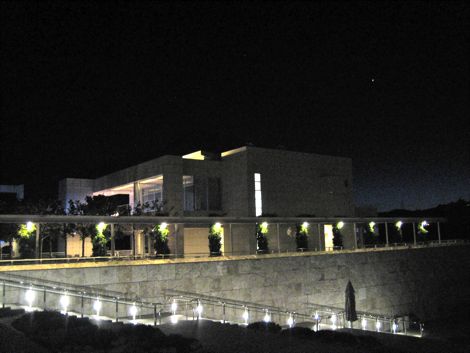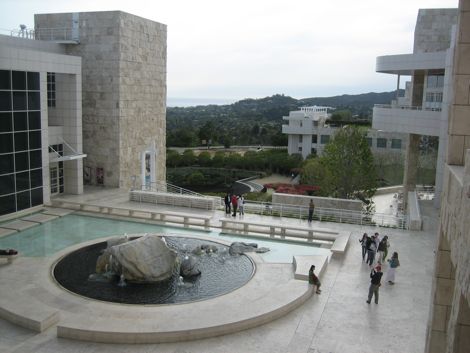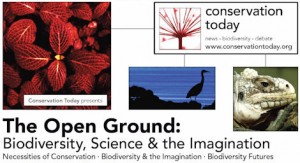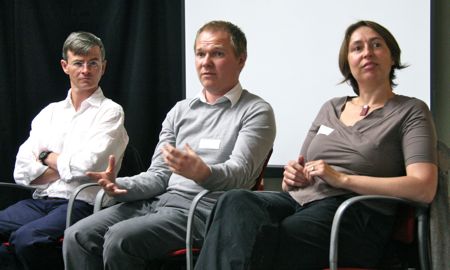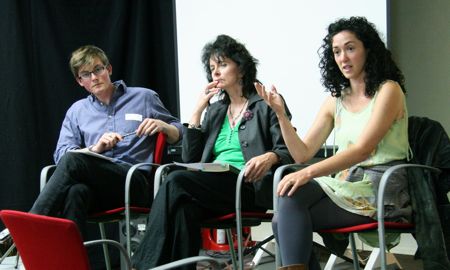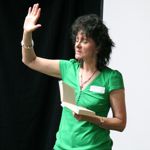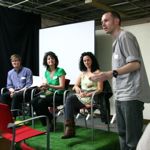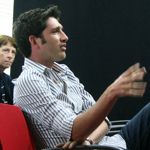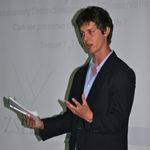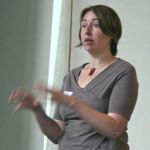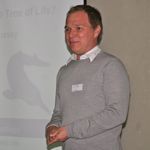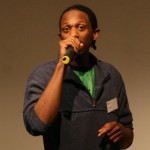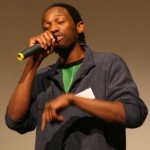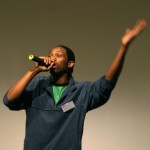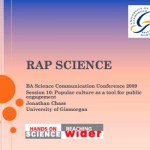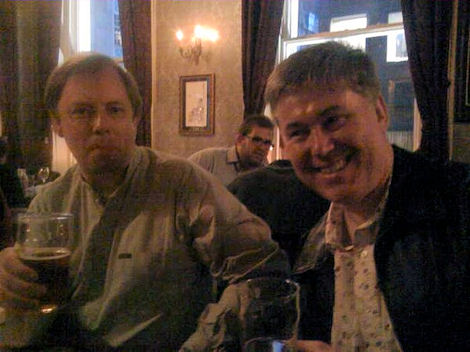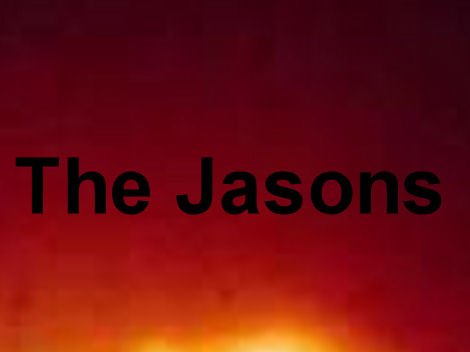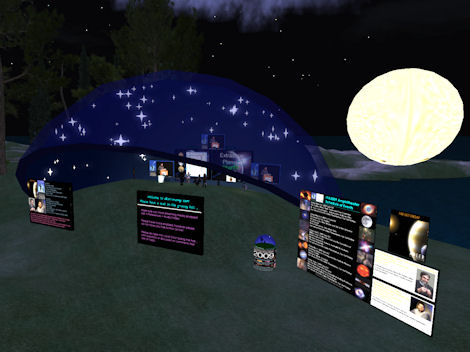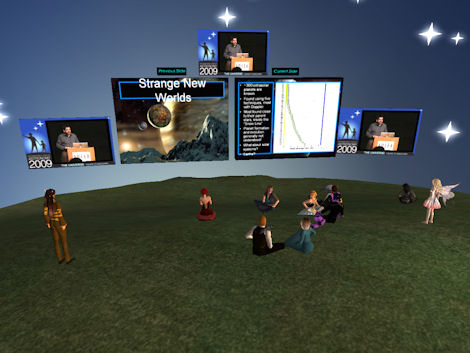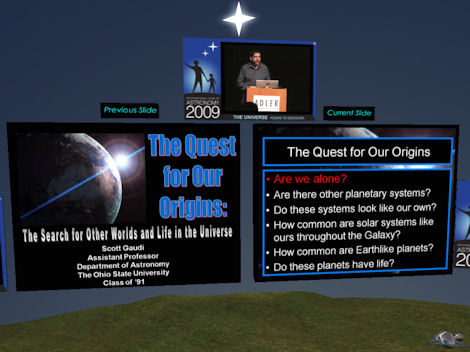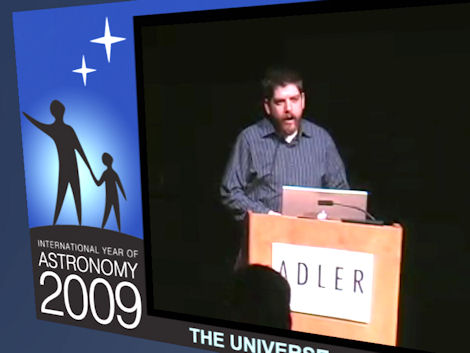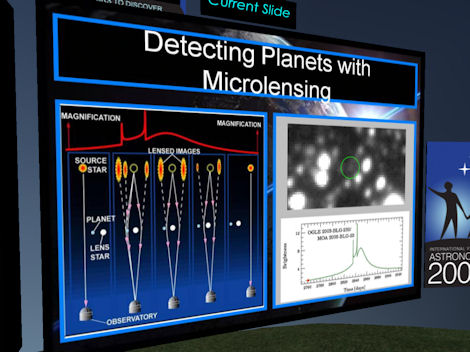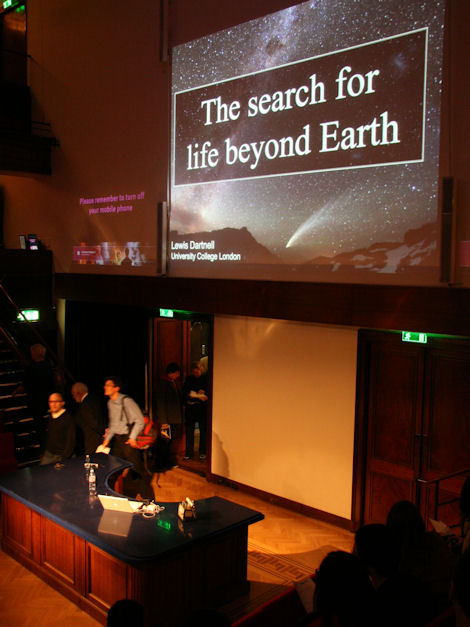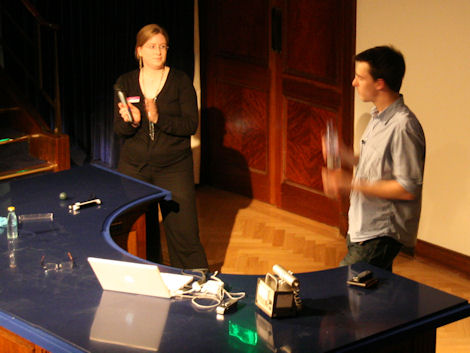South Western California is one of the world’s most bio-diverse habitats. The San Gabriel Mountains, north of Los Angeles and south of the Mojave desert, are home to large mammals: including deer, bear, mountain lion and bobcat. Raccoon and skunk are stealthy night-time visitors to the back gardens of residents, who by day enjoy the company of humming birds, golden oriels and scrub jays. Lizards scamper on sun-baked rocks, while praying mantis sway, poised – for lunch.
If this all sounds a little wistful, it’s because I’ve enjoyed this region at its best in a form that now – literally – no longer exists. For in August and September of this year, 250 square miles of it was destroyed in one of the largest forest fires California has experienced in modern times. Here is a time-lapse video of the fire spreading behind NASA JPL, and below that a picture of the local aftermath taken by my wife, Erin.

- Scorched Earth left by the Station Fire in the San Gabriel Mountains (photo: Erin Conel Jones)
I have to confess that while many thousands of wild animals – including some endangered species – perished in the fire, my immediate thoughts were for my in-laws. Living in the foothills north of Pasadena, they sat out their fire under a mandatory evacuation order, pondering the fate of house and home in front of a hotel TV in downtown LA.
Thankfully, save for a messy rainfall of ash in the yard, this personal story ended happily (although we remain girded for de-vegetated mudslides induced by the winter rains). The same cannot be said for the local fauna and flora – or for that matter the carbon footprint of California.
Animals caught in forest fires may run away, bury themselves, or burn and die. The so-called Station Fire (it started near a ranger station) was unusually intense and fast-moving, making it confusing and difficult to out-run; the charred carcasses of normally brisk bears, deer, and mountain lions were found amongst the smouldering tree stumps.
Those animals sufficiently fleet of foot to escape the immediate effects of a fire still face loss of habitat and possible starvation. On this occasion, the local populace was put on alert for more frequent visitations from displaced animals and asked to cut some slack for the potentially more dangerous coyote (i.e. don’t just shoot it).
Smaller land animals, such as the endangered Mountain Red-legged Frog; and fish like the Speckled Dace and Arroyo Chub may yet face their greatest challenge with the arrival of winter flood-waters, when ground unsupported by vegetation, but loaded with harmful rock fragments, will wash into fast flowing stream beds.
We might stand back at this point and declare the Station Fire to be just another part of a natural cycle that has developed over the eons. Whether a fire is started through an act of arson (as suspected in this case) or by lightning, forest fires invigorate fire-adapted ecosystems – don’t they?
The answer is yes and no – and this debate won’t end any time soon. The issues centre on the degree and speed with which man has altered the region’s natural ecosystem.
Fire-suppression policies, whereby unnaturally high fuel stocks are allowed to build up (e.g. pine needles), and forest management practices – for example how densely the forests are allowed to grow – have been blamed as contributors to the intensity and extent of the Station Fire.
But there is no denying that with man on the scene there are fewer places a large cat or bear can move to when fire strikes (a mountain lion was spotted in my in-laws’ drive – and that was before the fire).
Ironically perhaps, this region of California is home to several man-made animal sanctuaries, the inmates of which were themselves threatened by the recent fire.
The Roar Foundation at Shambala Preserve, run by actress Tippi Hedren (of Hitchcock’s ‘Birds’ fame) went on standby to evacuate its collection of large cats – including Michael Jackson’s tigers; and most of the 400 animals at the Wildlife Waystation Sanctuary – including a sizeable collection of chimpanzees – were evacuated to Los Angeles Zoo. I’m pleased to say my gibbon friends at nearby Santa Clarita were oblivious to this incident.
Now the fire is over, scientists and economists alike are poring over the barely cooled embers to assess the full impact and inform future policy. There is still much to do, but the concensus so far seems to be that the ecosystem as far as plant-life goes will recover. The fate of the various displaced animal species is much less certain or understood.
Besides the impact of forest fires on the immediate ecosystem and its inhabitants, incidents like this put us in mind of how deforestation of all types influences the balance of greenhouse gases and global warming.
This is a huge subject in its own right, and another complicating factor to be absorbed by those nations negotiating ahead of Copenhagen. This 2007 article from ScienceDaily gives some indication of the scale of the impact, pointing to research showing how a single fire season in some North American States can generate CO2 equivalent to that State’s annual emissions from entire man-made sectors such as transport or energy. And this before a consideration of the feedback effect of rising temperatures on the frequency of fires and complications associated with the impact of smoky particulates.
All in all, a fuller analysis of this aspect – on this blog at least – is going to have wait for a future post.
Also of interest:
Sparks fly over study suggesting wild fires cut CO2 (The Guardian)

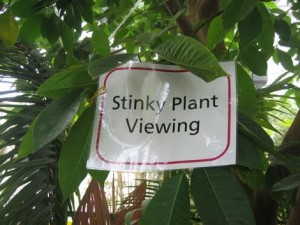 The deal with Stinky, one of the largest and smelliest flowers you’re ever likely meet, is that most of the time it keeps that outer petal-like spathe tightly closed around its central spadix. Only on rare occasions, often with years between events, does the flower open up for a very short time, simultaneously attracting pollinating insects inside with a disgusting (to us) odour – hence ‘Corpse Flower’.
The deal with Stinky, one of the largest and smelliest flowers you’re ever likely meet, is that most of the time it keeps that outer petal-like spathe tightly closed around its central spadix. Only on rare occasions, often with years between events, does the flower open up for a very short time, simultaneously attracting pollinating insects inside with a disgusting (to us) odour – hence ‘Corpse Flower’.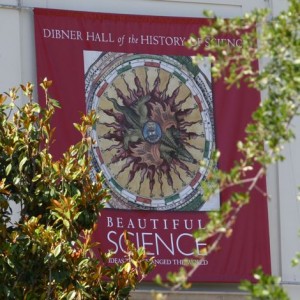 Moving on from smelly plants now. This was the first time I’d visited the Huntington since the Dibner Hall of the History of Science was opened in late 2008. The permanent exhibition, Beautiful Science, is wonderful, and you’ll find that doubly so if you like rare old books covering subjects ranging from astronomy to natural history to medicine and light.
Moving on from smelly plants now. This was the first time I’d visited the Huntington since the Dibner Hall of the History of Science was opened in late 2008. The permanent exhibition, Beautiful Science, is wonderful, and you’ll find that doubly so if you like rare old books covering subjects ranging from astronomy to natural history to medicine and light.
